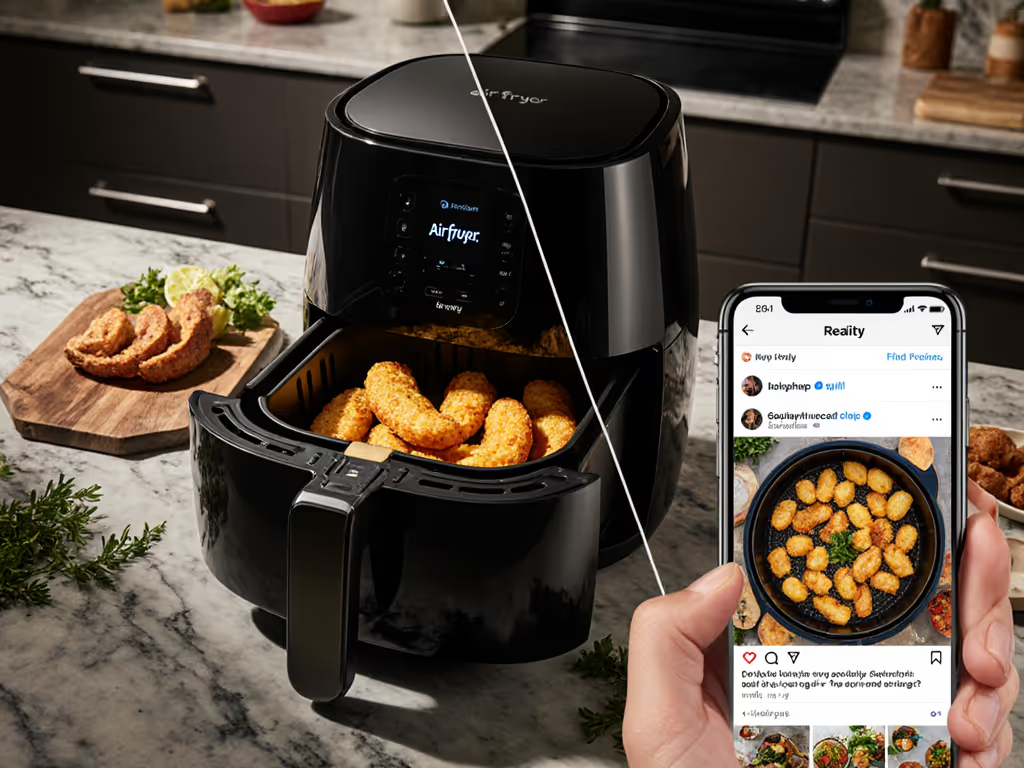
Air Fryer Environmental Impact: Manufacturing, Efficiency, and Longevity
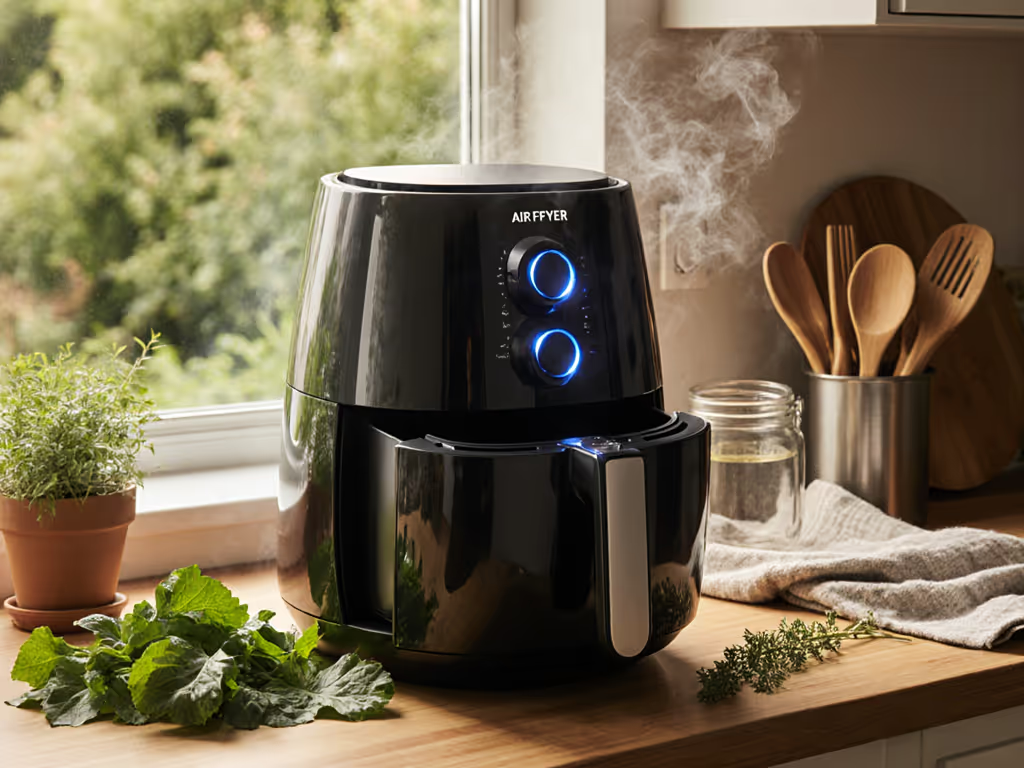
Air fryers significantly reduce cooking emissions compared to traditional methods, cutting particulate matter by 99% and volatile organic compounds (VOCs) by 92% versus pan-frying. They use up to 80% less energy than conventional ovens while requiring minimal oil, addressing both indoor pollution and resource consumption. However, their environmental footprint extends beyond operation to manufacturing materials and disposal challenges. This analysis examines the full lifecycle impact of these appliances, balancing efficiency gains against production realities to determine their true eco-potential.
How do air fryers reduce pollution during cooking?
Air fryers produce 0.6 micrograms/m³ of particulate matter (less than 1% of pan-frying's output) and just 20ppb of VOCs versus 260ppb from standard frying. This dramatic reduction occurs because:
- Minimal oil usage prevents oil degradation pollutants
- Contained heating chambers trap emissions
- Rapid cooking times limit exposure duration
University of Birmingham researchers confirmed these appliances create substantially less indoor pollution than any traditional method, with boiling being the closest cleaner alternative at 0.7 micrograms/m³.
Are air fryers truly more energy-efficient?
Yes, air fryers consume up to 80% less energy than conventional ovens due to:
- Faster preheating (under 3 minutes vs. 15-20 for ovens)
- Compact cooking chambers requiring less heated air
- Precision temperature control minimizing heat loss
This efficiency makes them particularly valuable for small-batch cooking, where full-sized ovens waste energy heating unused space. For a deeper, data-backed look at energy use versus ovens, see our air fryer vs oven energy comparison.
What environmental costs come from manufacturing?
Manufacturing impacts include:
| Factor | Concern Level | Mitigation Approaches |
|---|---|---|
| Plastic housings | High | Choose metal/stainless steel models |
| Non-stick coatings (PFAS/Teflon) | Critical | Opt for ceramic or PTFE-free alternatives |
| Electronics production | Moderate | Prioritize repairable designs |
| Shipping weight/volume | Moderate | Select locally manufactured units |
PFAS coatings pose particular concern, as these "forever chemicals" persist in ecosystems long after disposal. Brands like Instant Pot's stainless steel Vortex Plus avoid plastic casings, while ceramic-coated baskets eliminate toxic chemicals.
*Eco-priority checklist:*
1. Stainless steel or metal housing
2. Ceramic/non-toxic non-stick surfaces
3. Modular, repairable construction
4. Available replacement parts
How does reduced oil usage help environmentally?
By using 1-2 teaspoons of oil instead of quarts required for deep-frying, air fryers:
- Slash demand for resource-intensive oil production
- Eliminate used oil disposal contamination risks
- Prevent fat-clogged plumbing systems
This translates to reduced agricultural land use, lower processing emissions, and cleaner waterways versus traditional frying's oil dependency.
Do recyclable parts and longevity matter?
Air fryer lifespan directly determines environmental ROI. Units lasting 5+ years offset manufacturing impacts through:
- Reduced replacement frequency (fewer units in landfills)
- Modular repairability (replaceable baskets, elements)
- Recyclable material separation (metal vs. electronics)
Models like the Instant Pot Vortex Plus feature dishwasher-safe stainless steel components that resist degradation, while companies like Dash offer compact units with durable ceramic-coated baskets. Seek brands publishing schematics and selling individual parts to extend appliance life.
What defines an eco-optimized air fryer?
Prioritize models with:
Material composition
- Stainless steel housing (not plastic)
- Ceramic/PFOA-free non-stick surfaces
Design features
- User-replaceable heating elements
- Standardized basket sizes for accessory reuse
Performance traits
- ≥ 1700W heating power for efficiency
- ≤60 dB noise rating (reduced energy waste)
When durability aligns with operational efficiency (like the 6-quart Vortex Plus with stainless construction), the payoff compounds through years of low-emission cooking.
"Scale portions, not stress; conversions make consistency your superpower. My neighbor's journey from guesswork to precision proves that understanding your appliance's real capacity and energy patterns turns weekly cooking into a sustainable system, not a compromise."
Make consistency boring, in a good way, by choosing appliances built to last, calibrated to your actual kitchen rhythms, and designed for minimal environmental friction across their entire lifecycle. The numbers confirm: intelligent selection paired with operational discipline delivers both meal consistency and ecological responsibility.
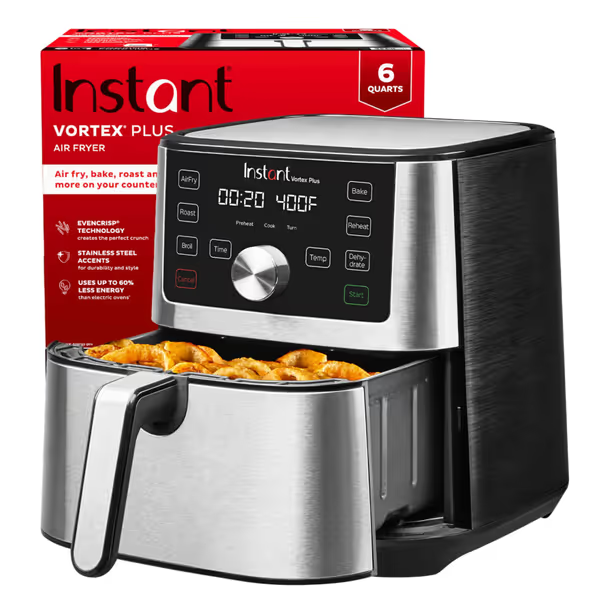
Instant Pot Vortex Plus 6QT XL Air Fryer
Related Articles

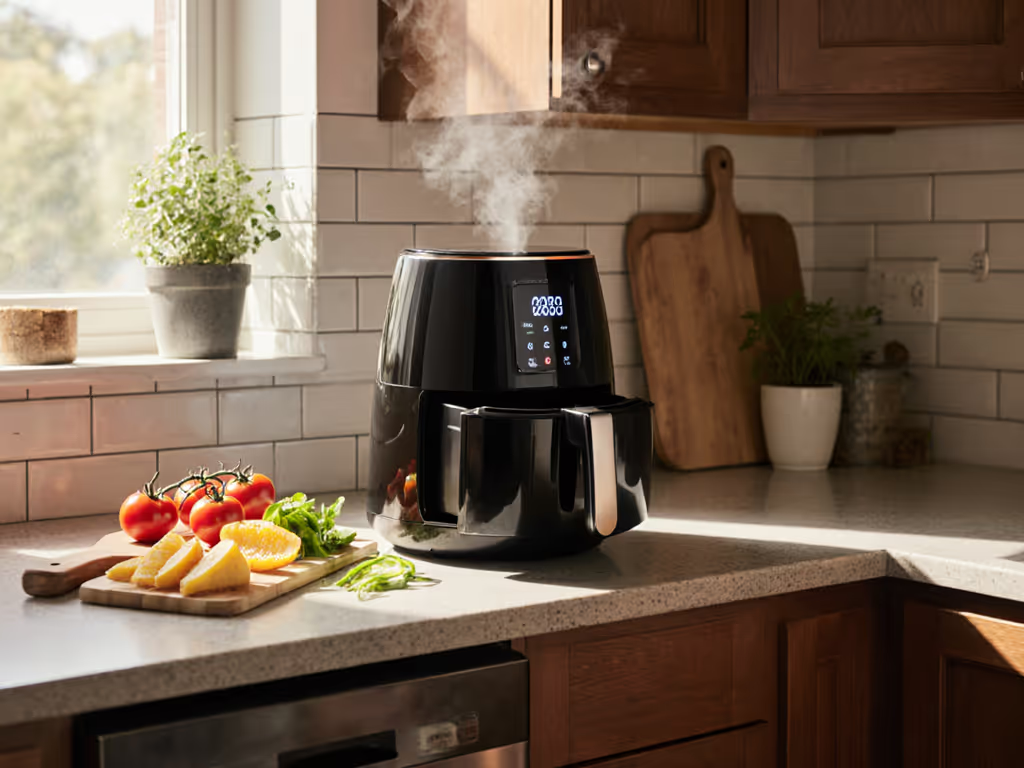
Best Small Air Fryer: Kitchen-Space Truths Revealed
Choose a small air fryer by rack area, heat recovery, and portions-per-hour - not quart claims - to keep batch cooking fast and food hot. Side-by-side tests favor the Instant Pot Vortex Plus 4QT for 2–4 person households, with the Dash Compact suited to solo use.
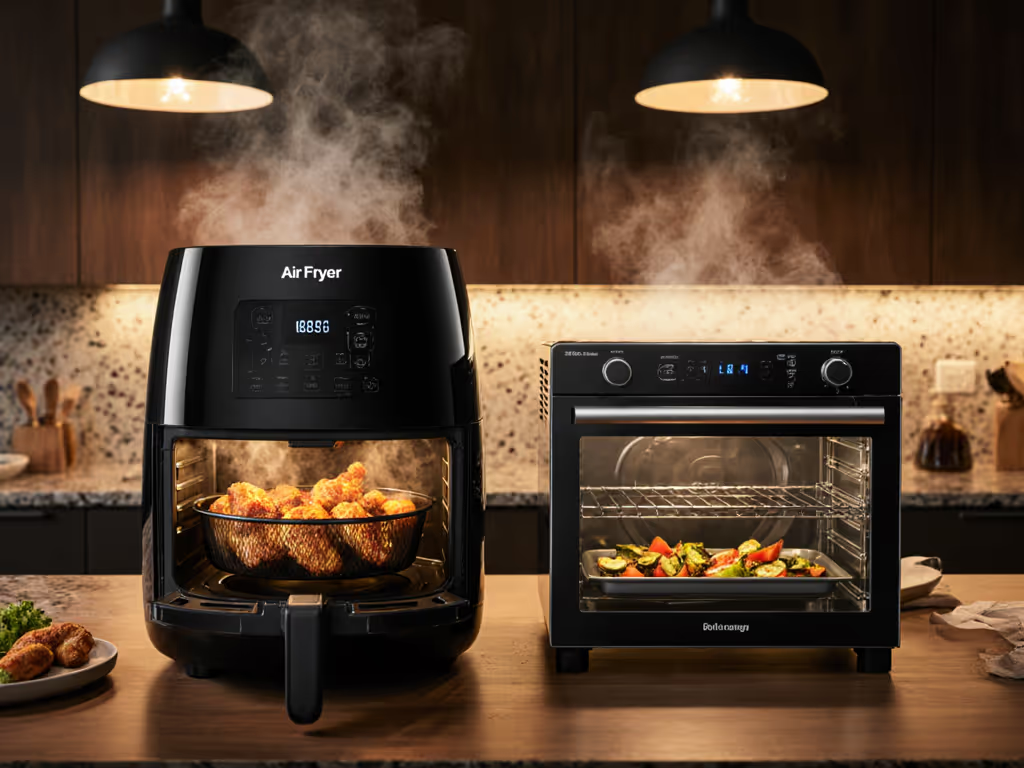
Why Air Fryers Are Mini Convection Ovens
Use simple, physics-backed rules to convert oven recipes to an air fryer - lower temp by 25°F, cut time 20–25%, mind spacing, check internal temps, and rest meats - for consistent crispness. Also learn to mimic air-fryer intensity in a convection oven and choose the most energy-efficient method.
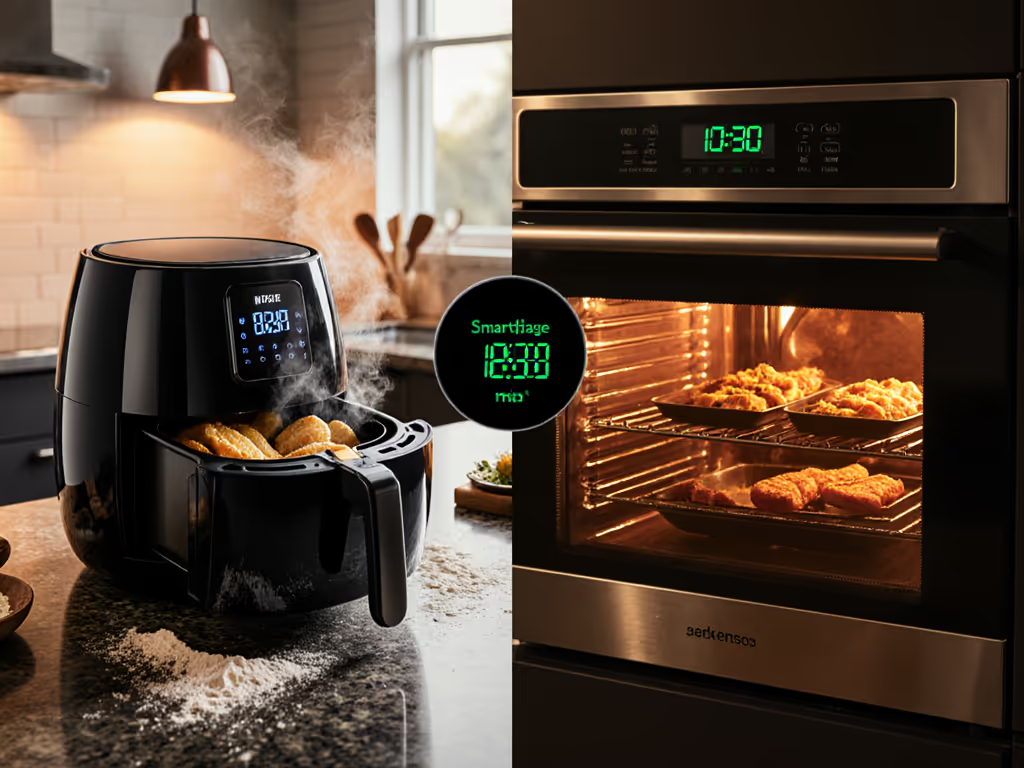
Air Fryer vs Oven: Energy Efficiency Compared
Measure efficiency by portions-per-hour and recovery time - not wattage - to know when an air fryer or an oven truly saves energy for your meal size. Use clear cost math and batching tactics to cut preheat waste, avoid bottlenecks, and keep food crisp.
